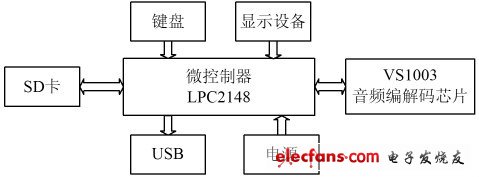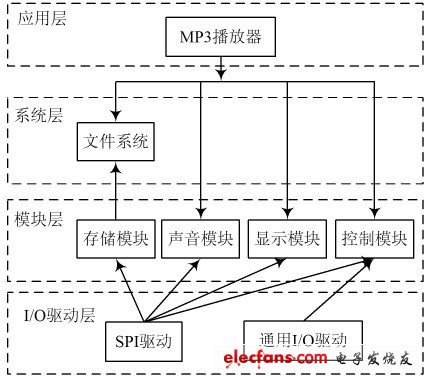Abstract: Designing a single-chip MP3 player, using the open source software project EFSL, using its low memory requirements, simple migration, completely free and so on, through the design of the underlying driver, the FAT file system based on SD card is transplanted on LPC2148, and The EFSL file system is configured and functional module compiled using CrossWorks for ARM 1.6 software. The correctness of the design was verified by software debugging. This design provides a new way to extend the functionality of microcontroller applications.
0 Preface
In recent years, with the development of digital technology, people's requirements for MP3 players have become more and more diversified, and manufacturers have made a lot of efforts in the selection, design, development, additional functions and applicable fields of MP3 players. A variety of programs have been designed. In the trend of faster processor speed and more and more storage capacity, the storage organization and memory setting of data in the product need to be managed efficiently and reasonably. This is the function of the file system.
The open source software project Embedded File Library (EFSL) relies on its advantages of small memory requirements, simple porting, and complete free of charge. As an embedded file system, it is very suitable for solving the problem of storage space management and function expansion of small single-chip microcomputers. This paper designs a new embedded MP3 player based on EFSL file system and ARM platform, which has certain practical value. At the same time, it provides a feasible reference scheme for the MCU to get rid of the constraints of the operating system and realize the multimedia application of the MCU.
1 hardware design
The hardware block diagram of the system is shown in Figure 1. The whole hardware system uses the LPC2148 of the ARM7-TMDI core of PHILIPS as the core processor, and controls the VS1003 decoding module, SD card interface module, USB interface module and human-computer interaction function module respectively.

Figure 1 Block diagram of the hardware structure of the MP3 player
1.1 master chip
The LPC2148 is a 16/32-bit ARM7TDMI-S microcontroller that supports real-time emulation and embedded tracking. It embeds 512 KB of high-speed FLASH memory, which is powerful enough to facilitate future system upgrades.
In this system, only USB, SPI, SSP interface functions and ADC functions are used for the time being, and the use of other functions is subject to expansion. The decoding module VS1003 integrates a VS_DSP processor, a stereo audio DAC, and a stereo headphone amplifier driver. Since the decoding is separated from the control chip, the sound quality is good and the control is relatively simple. The LPC2148 controls the VS1003 through its SPI interface.
1.2 display module
The display module uses VGS12864E, VGS12864E is 128&TImes; 64-line dot matrix OLED monochrome, character, graphic display module. The module has built-in 64 & TImes; 64 display data RAM, each of which corresponds to a light and dark state of a dot on the OLED screen; its command system is compatible with the liquid crystal display drive controller HD61202. The system uses 8-bit I/O port to connect with OLED module 8-bit data bus D0~D7 through analog timing, and then through 3-bit I/O port and LCD command control or data operation bit RS, read/write control bit R The /W is connected to the enable control bit E to control the OLED module.
1.3 storage module
The use of an SD card as a storage medium has the advantages of large capacity, small size, and anti-vibration. The songs are all stored in the SD card, and the SD card works in SPI mode. Connect to the SD card by setting the SSP of the LPC2148 to the SPI function. At the same time, the other two I/O ports of the chip are set to the detection pins that the card is fully inserted into the deck to detect whether the pin and the card are write-protected.
2 software design
The player uses a four-layer structure to achieve its function. The software hierarchy is shown in Figure 2. The main purpose of adopting modularity is to facilitate module portability.

Figure 2 playback software hierarchy
Formation System,Quality Formation System,Formation Automatic Line System,Automatic Battery Waterbath Formation System
zhejiang BSL battery technology service company , https://www.bslbatteryservice.com